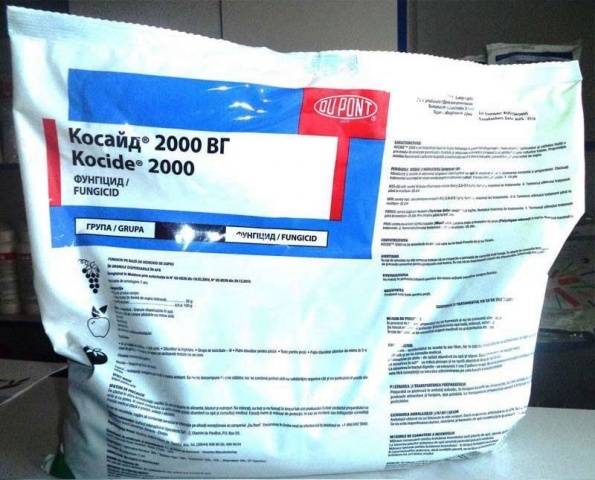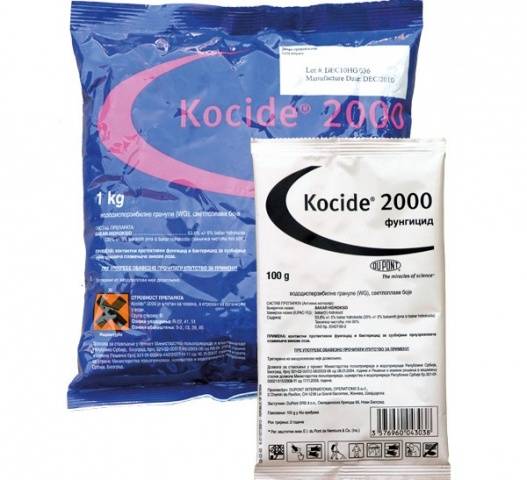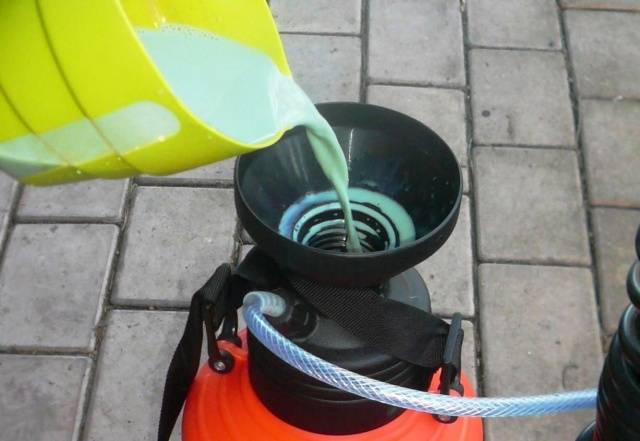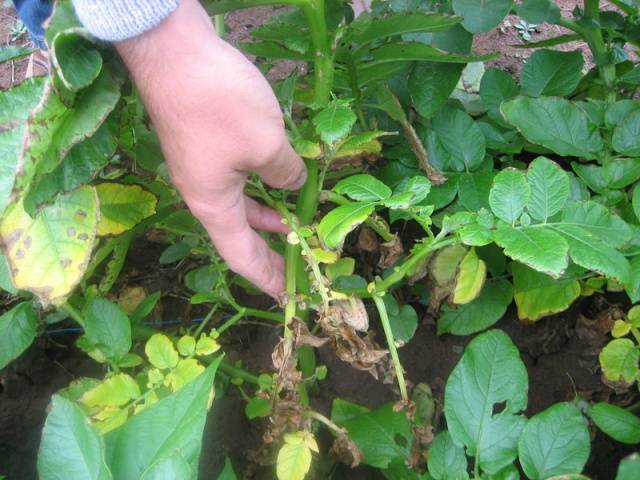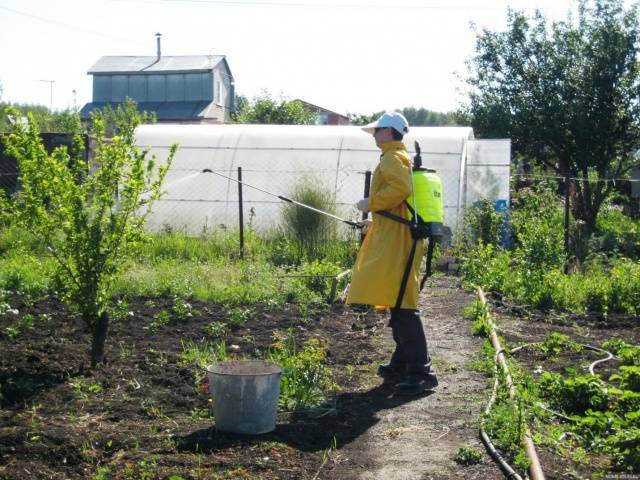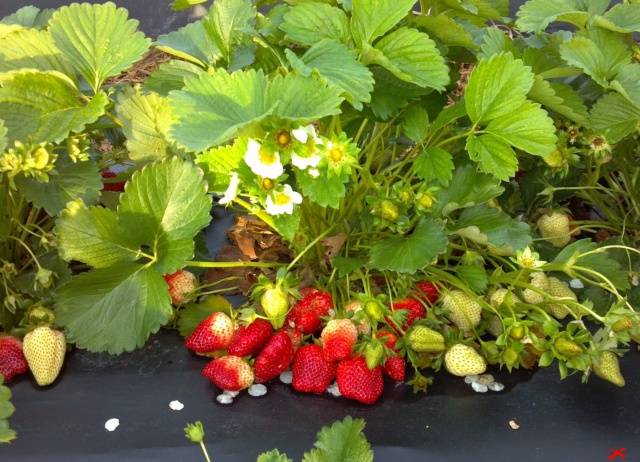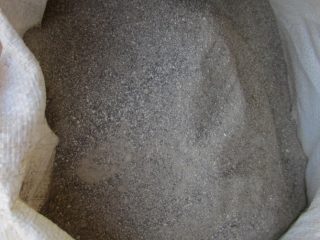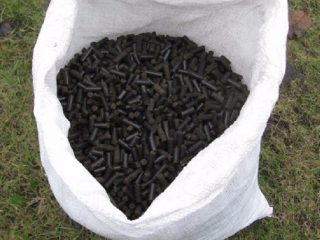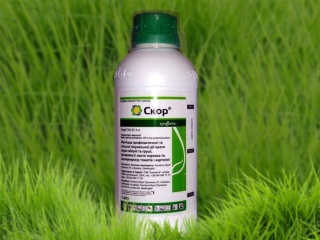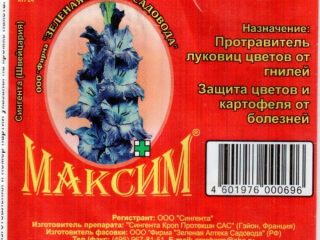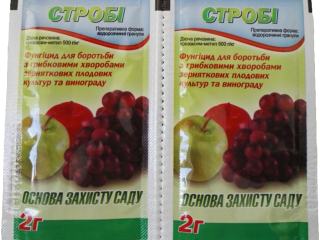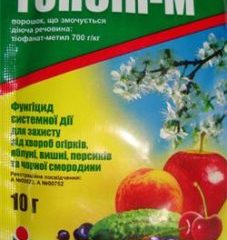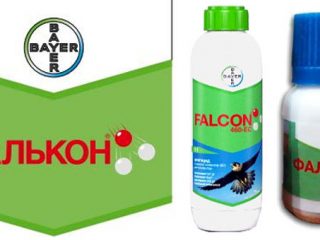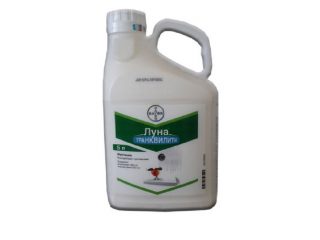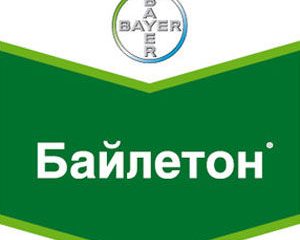Content
Every gardener or gardener who is seriously involved in his garden plot wants to reap a rich harvest and protect his plants from various infections. When conventional measures to combat them fail, agrochemicals come to the aid of summer residents. Coside 2000 is a modern broad-spectrum fungicide. We will give detailed instructions for using the drug, get acquainted with its features and reviews from agricultural workers.
Features of the drug
Fungicide Coside 2000 is one of the newest contact preparations copper based, which is designed to protect vegetable and horticultural crops from infectious diseases. He is effective prevents both fungal and bacterial diseases. The protective effect lasts up to two weeks.
Purpose and form of release
The fungicide is used to treat potatoes, tomatoes, onions, peaches, grapes, apple trees, strawberries and many other cultures. Coside is used to prevent a wide range of diseases:
- Alternaria (dry spotting);
- late blight (brown rot);
- peronosporosis (downy mildew);
- scab;
- moniliosis (fruit rot);
- mildew;
- gray rot;
- bacterial spot.
The drug is available in the form water-soluble green-blue granules. In markets and online stores they offer various packaging of the toxic chemical Coside. For private gardening, you can purchase sachets of 10, 20, 25 and 100 g of the substance. Large agricultural producers prefer to buy fungicide in large volumes - 1, 5 and 10 kg.
Mechanism of action
Active component of the drug Coside 2000– copper hydroxide, the concentration of which in dry matter is 54% (per 1 kg of granules - 540 g of copper). During preventive spraying a protective film is formed on the surface of the plant, which protects the culture from pathogenic microorganisms. This layer is created by small copper crystals that envelop the leaves.
As soon as the fungicide solution hits the plant, divalent copper ions disrupt the vital processes of bacteria and fungi: protein synthesis, the functioning of cell membranes and various enzymes.
pros
According to reviews from summer residents, the main advantages of the agrochemical Coside are:
- simultaneous control of fungal and bacterial infections;
- high content of bioactive copper;
- has unique chemical and physical properties of formulation;
- the likelihood of pathogenic organisms becoming accustomed to the drug is low, since it has a versatile effect;
- the fungicide is not sensitive to changes in weather conditions, therefore resistant to rain and watering;
- economical consumption;
- has low toxicity both for insects and humans;
- the product dissolves quickly in water and does not generate dust during processing;
- has good compatibility with many drugs.
A distinctive characteristic of the drug is that it is suitable for many cultures and has a wide spectrum of action.
Minuses
Despite a number of positive aspects, we should not forget that the Koside fungicide is classified as a pesticide. Therefore, it is important to follow standard safety precautions when handling it.
The disadvantages of the drug include:
- Fits only for preventive measures. Not used for therapeutic purposes.
- Protects plants only from the outside, as it does not penetrate plant tissue.
- Inconvenient packaging and storage.
- If the air temperature is above +26 degrees, then spraying should not be done, as burns may appear on the leaves.
If all recommendations for the use of fungicide Coside 2000 are followed, shortcomings can be avoided.
Preparation of working solution
To spray plants with Coside fungicide, you need to choose the evening or morning time so that the sun cannot burn the leaves. It is advisable that the weather was dry but cloudy. The working solution is prepared using a special method. Measure out the required amount of granules and dissolve them in a small amount of clean water. The resulting concentrate is poured into a spray bottle filled with water. The liquid is mixed well with a wooden stick until smooth.
Processing of garden and vegetable crops is carried out during their growing season. The first spraying is carried out to prevent infections in early spring. Subsequent ones - when visible symptoms of the disease appear. Maximum number of sprays – 2-4 depending on the type of crop. The interval between them should not be less than a week. Do not treat flowering plants with fungicide.
Tomatoes
Fungicide Coside 2000 prevents alternaria, septoria, macrosporiosis and late blight on tomatoes. These insidious diseases reduce the quality and volume of the harvest several times, and in advanced cases can lead to the death of the plant.
To protect the beds, prepare a solution of fungicide Koside 2000 at the rate 50 g of substance per 10 liters of water. According to the instructions for use, tomatoes can be sprayed no more than 4 times with an interval of 1-2 weeks. On average, 300 liters of working fluid (2.5 kg of the drug) are consumed per hectare. Vegetables can be collected and eaten no earlier than two weeks after the last spraying.
Potato
Any gardener, both experienced and beginner, may encounter problems such as late blight and alternaria on potatoes. Crop plantings are effectively protected by preparations containing copper, for example, the fungicide Coside.
To prepare the working fluid, 50 g of granules are poured into a ten-liter bucket of water. Potatoes are sprayed 4 times using a spray bottle. The interval between preventive procedures is 8-12 days. 300 liters of solution (1500-2000 g of agrochemical) are used per 1 hectare of land. The final treatment must be carried out 15 days before harvesting the tubers.
Onion
In cold and rainy weather, onions can be attacked by downy mildew. This is an insidious disease that is especially dangerous for seed plants, since the resulting seeds will not bear fruit.
The disease is best prevented using the fungicide Coside. To do this, measure out 50 g of the substance, add it to a 10 liter bucket of water and stir thoroughly. The resulting solution is sprayed onto the affected plants. four times with an interval of 2 weeks. Prophylaxis should be carried out 2 weeks before harvest.
Grape
The most common and dangerous vineyard disease is mildew. Leaves and berries are affected, which become unsuitable for consumption and winemaking. Timely prevention using the fungicide Coside 2000 will save the grapevine from downy mildew.
The working fluid is mixed from 30 g of the drug and 10 liters of clean water. The maximum number of sprayings of the vineyard is 4. Each subsequent treatment should be carried out no earlier than after 10-12 days. Berries are allowed to be collected a month after the last spraying.
Peach
When the peach's flower buds begin to open in the spring, the fruit tree may be affected by leaf curl. The spores of this insidious disease are found under the scales of the buds. Therefore, it is important to spray peach trees early with Coside 2000.
fruit tree treated with fungicide 2 times: before flowers appear and during the green cone phase. The first spraying is carried out a more concentrated solution at the rate of 60 g of the drug per 10 liters water. For the second spraying, prepare a liquid from 25 g of granules and ten liters of water. 900-1000 liters of working solution (2-6 kg of fungicide) are consumed per 1 ha. The fruits are harvested 30 days after the last preventive procedure.
Apple tree
Preventive use of the drug Coside 2000 guarantees effective protection of apple trees from scab and brown spot.
The fruit tree is sprayed no more than 4 times.The first time it is processed during the swelling of the buds, the second time when the buds begin to separate, the subsequent ones with an interval of 10-14 days. For apple trees, Koside 2000 fungicide is used in the following dosage: for 10 liters of water 25-30 g of the drug. 800-900 liters of solution (2-2.5 kg of granules) are consumed per hectare of land.
Strawberry
Products containing copper are highly effective in combating with strawberry brown spot. One of these is the fungicide Coside.
To spray plantings, dissolve 20 g of the drug in 10 liters of water. The maximum number of strawberry treatments per season is no more than 3. The first procedure is carried out in the spring before the berry crop blooms. Spraying with fungicide is repeated after 15 days. In the fall, you can carry out an additional procedure immediately after harvesting.
Analogues and compatibility with other drugs
Fungicide Coside 2000 can be used in tank mixtures with other drugs. Incompatible with organophosphate insecticides and with drugs containing fosethyl aluminum and thiram. It is also not recommended to mix it with substances that have an acidic reaction.
The following drugs are analogues of Coside: Cupid, Meteor and Mercury. They are all made on the basis of copper sulfate.
Safety regulations
Fungicide Coside not dangerous to humans (toxicity class 3) and is moderately toxic to bees and aquatic organisms. It is prohibited to carry out work near apiaries and ponds.
Although the drug is not toxic, it may cause irritation to the skin and mucous membranes. Therefore, during preventive procedures, standard safety measures should be followed:
- wear latex gloves, a petal respirator or a cotton-gauze bandage, and safety glasses;
- if the fungicide gets on your skin and clothes, change clothes and wash in the shower;
- If, when spraying plants, the solution splashes onto mucous membranes (eyes and mouth), rinse them thoroughly with water;
- if the drug gets into the digestive tract, take activated charcoal according to the instructions.
Store Coside fungicide in a separate room, away from food.
Reviews from summer residents
Conclusion
Fungicide Coside is a preventive copper-containing agent that is characterized by low toxicity. Not many summer residents know about its existence, which is frustrating, because it is an effective drug that combines many advantages.
